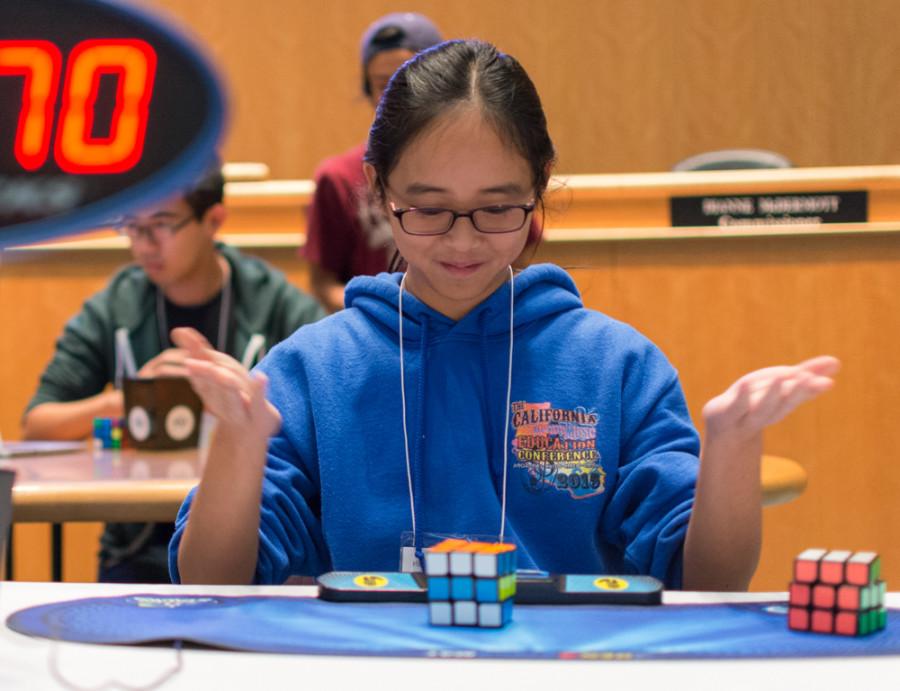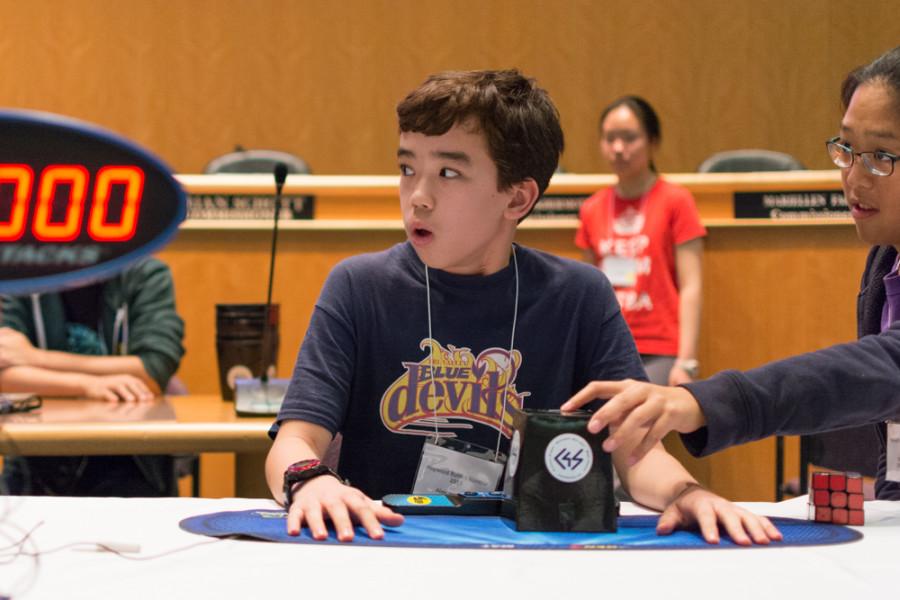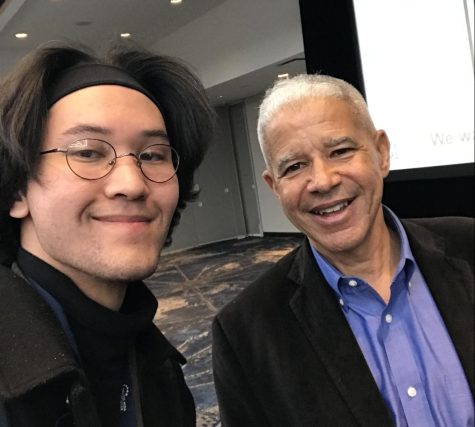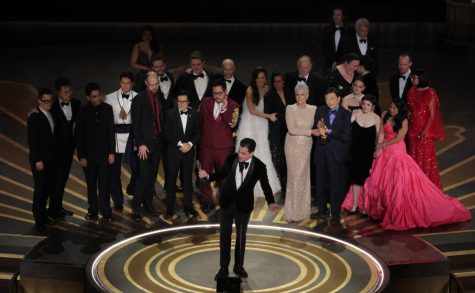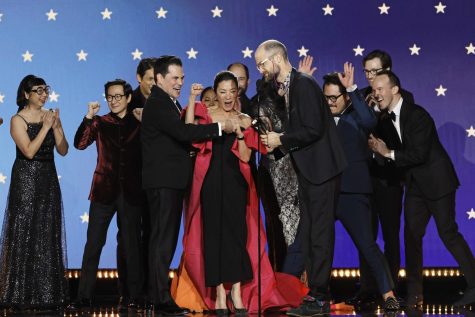Ready, Set, Rumble: Cubers click at Hayward City Hall
November 12, 2015
Hayward became the most recent location for speed-cubing: the Hayward Rubik’s Rumble at City Hall in Hayward welcomed national and international champions to the event. Nearly 100 competitors gathered in Hayward to display their Rubik’s Cube skills and possibly capture a win thanks to some fast hands.
Many people lump the Rubik’s Cube in a category with other fads like the Pet Rock, a Chia Pet or even a Slinky. In its infancy the toy faced critics who claimed it was a fad during the 1980s with little relevance on the world. Those critics were wrong. The Rubik’s Cube, originally known as the “Magic Cube,” was designed to be unsolvable.
[mks_pullquote align=”left” width=”300″ size=”24″ bg_color=”#000000″ txt_color=”#ffffff”]“We were out to solve everything.”[/mks_pullquote]Erno Rubik, an architecture professor in Budapest, set out to create a puzzle without a solution. “We were out to solve everything,” Rubik said in an interview with a local newspaper in Budapest in 1982. “We can’t and won’t solve everything, this is what the original idea symbolized.” Bi-annual speed cubing competitions among die-hard fans began in 1982 in Budapest.
After a lengthy hiatus, speed-cubing competitions resumed in 2003 and Dan Knight was crowned champion with a time of 20 seconds. The cube got a makeover
in 2013, which included new action mechanisms and sturdier tiles, which were designed to help cubers solve the puzzle even faster. Competitors have gotten exponentially better at solving the cube: at the 2013 championships, winner Feliks Zemdegs captured the speed title with a time of 8.18 seconds.
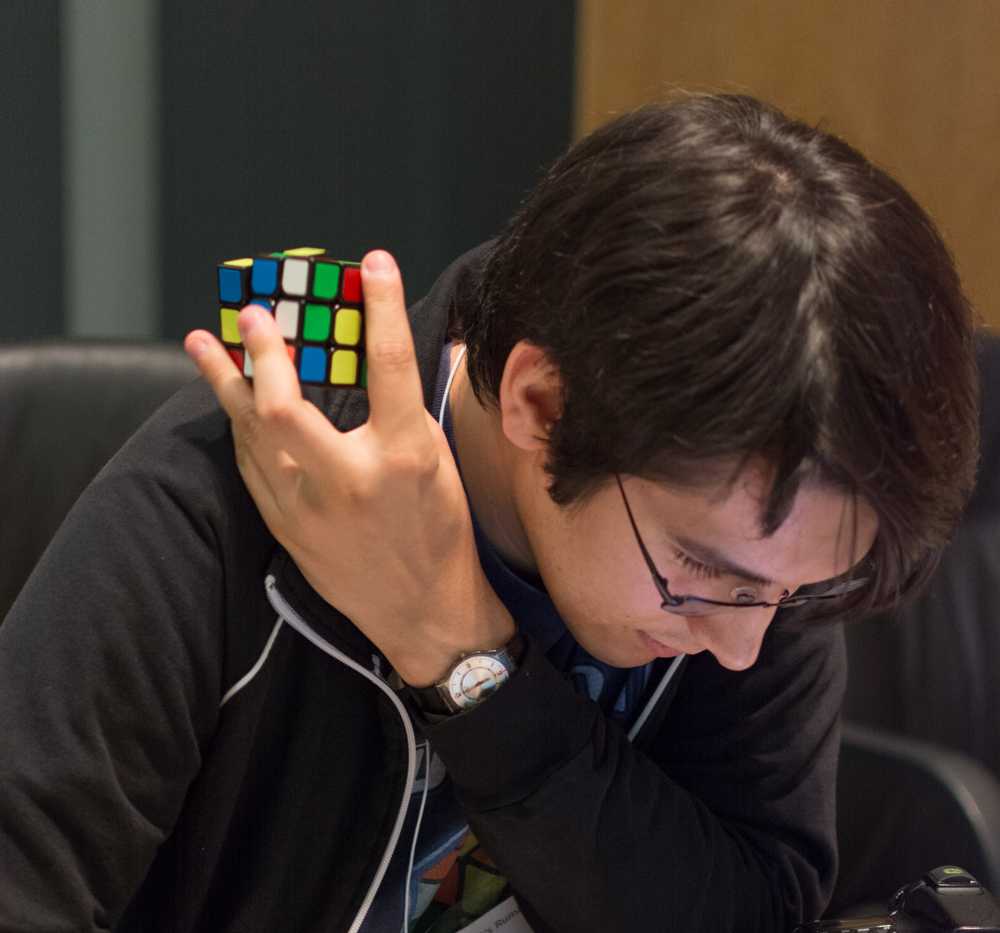 The sights and sounds of cubing are unmistakable. Clicking and plastic movable pieces rubbing each other could be heard from outside city hall like a symphony of soft noise. Competitors rarely look up and when they do it is usually because they are done solving. Richard Jay S. Apagar is Asia’s current speed cubing champion. Apagar traveled from the Philipines to Hayward in order to compete. “The cubing community helped me become more social and make real friends,” Apagar said. “I had a lot of Facebook friends, but not much confidence or real friends. This community has given me confidence in myself and I’ve made friends that I probably wouldn’t ever have without cubing.”
The sights and sounds of cubing are unmistakable. Clicking and plastic movable pieces rubbing each other could be heard from outside city hall like a symphony of soft noise. Competitors rarely look up and when they do it is usually because they are done solving. Richard Jay S. Apagar is Asia’s current speed cubing champion. Apagar traveled from the Philipines to Hayward in order to compete. “The cubing community helped me become more social and make real friends,” Apagar said. “I had a lot of Facebook friends, but not much confidence or real friends. This community has given me confidence in myself and I’ve made friends that I probably wouldn’t ever have without cubing.”
There were team events where competitors solved multiple cubes together, individual events based on speed and even a blindfolded event that seemed to be the most challenging of the day. Current United States speed-cubing champion and UC Berkeley student Riley Woo had the most impressive showing of the day when he solved a cube in just minutes during a demonstration before the finals — using his feet. Woo said after he got really good at solving it with his hands he decided to challenge himself by solving it with his feet.
“They have competitions for it and I just thought it was fun,” Woo said. “People always seem to be impressed when I solve it with my feet.” The cubing world is just like any other gaming or sporting environment. There are teams, sponsors, leagues, governing bodies and even uniforms in some cases. Event organizer Jeremy Fleischman was thankful to the city for allowing them to use City Hall as a venue.
“We’re usually in a pretty small room,” Fleischman said. “This is far from what we’re used to. We’re normally packed in a small classroom.” On Saturday, cubers were consistently solving the cube in about 10 seconds and some even faster.




